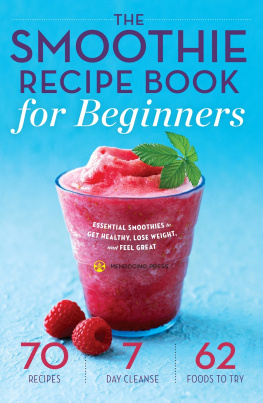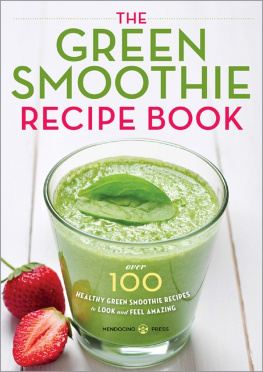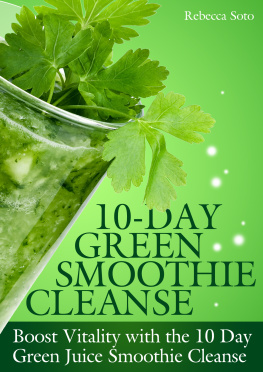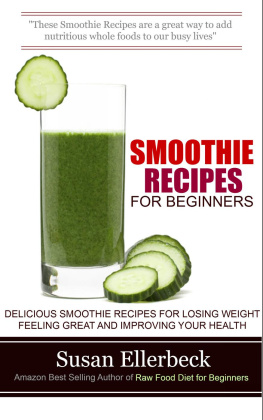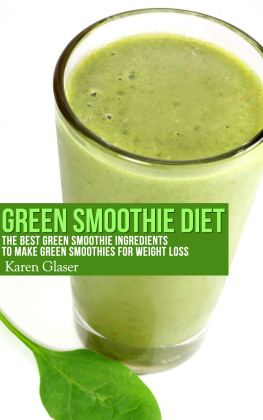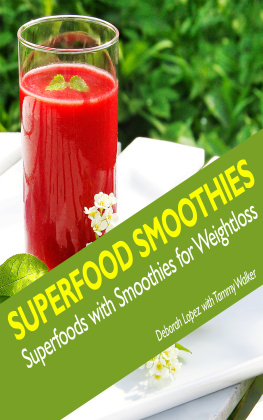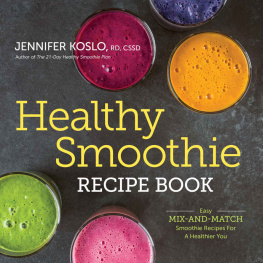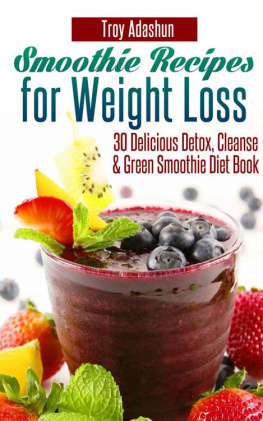APPENDIX
The Dirty Dozen and The Clean Fifteen
In an effort to increase food production and keep produce prices down, many farmers use conventional methods that include the application of chemical fertilizers and pesticides, despite the fact that many of these substances have been linked to cancer, birth defects, and other devastating health problems. According to the Environmental Working Group, an organization comprising researchers, policymakers, and scientists, you can reduce the amount of toxins in your daily diet by as much as 80 percent by consuming certain types of organic produce.
Using data from the United States Department of Agriculture (USDA) studies that focused on measuring the amount of toxic residue remaining on produce after it had been washed, the Environmental Working Group compiled two lists: The Dirty Dozen and The Clean Fifteen. These lists are intended to help consumers make purchasing decisions to prevent excessive exposure to toxic residues.
When conventionally grown, the fruits and vegetables comprising The Dirty Dozen list tested positive for as many as sixty-seven different chemicals and should be consumed only when organically grown. Those on The Clean Fifteen list bore little if any trace of chemical residue and are considered to be safe even when grown conventionally.
THE DIRTY DOZEN
Unfortunately, the dirty dozen list contains many of the best fruits and vegetables for health. Many of these are also popular smoothie ingredients.
- CeleryCelery grows in clumps, with the plants bases forming cuplike reservoirs where moisture accumulates. Toxic residues also accumulate there, and celery is often completely coated in pesticide and herbicide with the heaviest concentrations being toward the bottom of the plant.
- PeachesPeaches are very attractive to pests and are easily damaged, so farmers often feel the need to spray them heavily to prevent infestation. If you choose conventionally grown peaches, wash them well and peel them before use.
- StrawberriesStrawberries grow close to the ground and are targets for all sorts of pests. They also have bumpy exteriors with tiny hollows that allow residue to accumulate. As they wont hold up to heavy scrubbing and cannot be effectively peeled, its best to choose organic ones or select a different fruit if an organic option is not available.
- ApplesApples have concave areas at their stems and bud ends where toxic residue accumulates. Fortunately, they are easy to peel and core, so even if organic apples arent an option, you can enjoy the inner portion of the fruit without worry. Keep in mind that there are many important nutrients in and just beneath an apples skin; select organic whenever you can to get as many benefits as possible from this wonderful fruit.
- Domestic BlueberriesLike strawberries, blueberries are delicate and at risk of infestation. To keep prices down and increase yield, conventional growers utilize pesticides, which are very difficult to eliminate without destroying the berries. Organic blueberries are usually easy to find, particularly in the frozen food aisle.
- NectarinesNectarines attract pests and are easily damaged, so farmers often spray them heavily to prevent damage and potentially devastating crop losses. If you love nectarines and cant find organic ones, be sure to wash and peel them before consumption.
- PeppersBoth sweet and hot peppers are favorites with garden pests, so theyre often liberally sprayed with a toxic cocktail of pesticides designed to prevent damage. Choose organic whenever possible.
- Kale, Spinach, and Collard GreensGreen vegetables like these are easy to grow organically, but many farmers elect to produce them conventionally. Its nearly impossible to rinse all the toxins off these essential foods, so be sure to choose organic at all times.
- CherriesSweet, delicate, and highly prized, cherries are easily damaged when bugs invade. The availability of fresh organic sweet cherries varies from one place to the next; if you cannot find them locally, you may need to select frozen organic sweet cherries.
- PotatoesPotato bugs and other pests can rapidly devastate potato crops, so large-scale farmers often keep prices down by dousing their plants with pesticide that leach into the soil and into the potatoes. While you probably wont be adding potatoes to your smoothies, its important to eat clean, healthy food at all times.
- GrapesNo matter what color they are, conventionally grown grapesparticularly those grown overseasare covered in toxic pesticide. Organic producers are starting to offer more grape varieties, and these, along with organic grape juices and wines, are becoming easier to find in many places. If you cannot get organic grapes, choose a different fruit for your smoothies and snacks.
- LettuceOrganic lettuce is now easy to find in most places, so whether youre enjoying a green smoothie or a salad, be sure to select an organic option rather than a conventional pesticide-laced one.
THE CLEAN FIFTEEN
Though this group of fruits and vegetables is considered safe to eat when grown conventionally, its important to recognize that conventional agriculture practices are often not as sustainable as organic agricultural practices are. Choose organic foods whenever you canyoull be promoting planetary health while doing your body a favor.
- OnionsOnions are not at all attractive to pests, so even those which are conventionally grown dont contain high levels of toxic residue. If you like green onions, look for an organic option so you can enjoy the tops as well as the bulbs.
- AvocadosWith their thick skins, which are removed before consumption, avocados are a safe bet, whether grown conventionally or organically. Be sure to wash your avocados before cutting into them.
- PineapplesThick-skinned pineapples are another safe choice, even when conventionally grown.
- Sweet CornEven though you wont likely toss sweet corn into a smoothie, this vegetable is a delicious summertime treat that most people enjoy. Thanks to its husks, the kernels inside are not normally tainted with residual pesticide.
- MangosLike many other thick-skinned fruits and vegetables, mangos are fine to consume even if they have been conventionally grown. Be sure to remove all traces of skin before tossing fresh mango chunks into your smoothies.
- Sweet PeasThanks to their protective pods, sweet peas are a safe bet even when conventionally grown. They can be a fun addition to green smoothies, particularly when purchased fresh from the farmers market.
- AsparagusPests do not care for asparagus, so its not heavily doused with chemicals. While its important to wash it before consumption, its safe even if its not organic.
- CabbageOnly the outermost leaves of fresh cabbage are covered in pesticide; the inner leaves have been protected and are safe to consume. Avoid pre-shredded cabbage products though; these are less nutritious and more likely to be contaminated than whole cabbages are.
- Kiwi FruitAs kiwi must be peeled before use, its a good choice whether organically or conventionally grown. Wash it well before cutting or peeling to ensure no residue makes its way into the fruits flesh.
- EggplantThis member of the nightshade family is not terribly attractive to insects, so farmers often use very little pesticide. While raw eggplant is not suitable for addition to smoothies, cooked eggplant makes a great addition to a healthy diet.
- WatermelonWatermelons thick rind protects the fruit inside from pests, and even when pesticide has been heavily applied, it remains on the outside of the melon. Keep in mind that heirloom watermelon is often much tastier than its modern counterparts, and these old-fashioned melons are usually produced by organic farmers. Give them a try if you get an opportunity.
Next page
